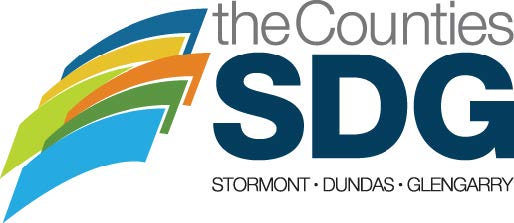The United Counties of Stormont, Dundas & Glengarry held its monthly council meeting on July 19.
The Councillors met in person, inside, keeping a six-foot space between each other.
The council chambers are very spacious, allowing for plenty of space for speaking without masks. Only one councillor sent their regrets, saying that they didn’t realise the meetings were in-person again.
It was a long meeting, with two lengthy closed sessions, one concerning the updated sign bylaw, and another concerning the Official Plan Appeal. These closed sessions are pursuant to Section 239(2)(f) of the Municipal act, relating to advice that is subject to solicitor client privilege.
The Council is putting $50K from working reserves into a new dedicated reserve, a Digitisation Reserve, in order to facilitate the digitisation of the remaining County newspaper and Lost Villages collections. Image Advantage Ltd will continue digitising the remaining pages and photos for $.85 a page or picture.
Several businesses are the recipients of SDG Regional Incentives Program grants, including Cannamore Orchards, Heritage Health & Spa, and Upper Canada Veterinary Services in North Dundas. In total $104K was awarded through the Program.
Vacant positions on various committees, as a result of the previous Warden’s departure, were filled. Some storm sewer lining is being replaced in Brinston.
County Road 8 is being upgraded. The company that previously provided GPS fleet tracking for vehicles, Automatic Vehicle Locator Services (AVL), has been bought out, and no longer provides this service. AVL allowed tracking of location and speed live and historically.
A new two-way radio tower is being installed in order to support the restoration of the two-way radio communications network for the Transportation Department. The project will allow for better communications between staff members while conducting their work, as the radios are exempt from Ontario’s handsfree/distracted driving legislation.
The system also provides another means of communication if the cell network crashes or overloads, by natural disaster, damage to the infrastructure, or high-call volume clogging the network. A communications network that does not rely on cell towers, and allows personnel to legally communicate with each other during essential work, is a good investment.
This is being done by: demolishing and replacing the existing radio tower and antenna in Newington; converting the County’s existing radio licence from UHF to VHF; procuring equipment such as a repeater, base stations, mobile radios, and hand-held radios; and repairing the Newington base station building.
North Dundas’ Mayor, Tony Fraser, stated to council that we must have this technology in the event of an emergency. North Dundas puts a certain amount aside in every budget to support emergency communication.
Al Armstrong, North Dundas Deputy Mayor and SDG Warden, said that we may not need this technology very often, but when we need it, we really need it.
Similarly, with emergency management in mind, the alternate emergency operations centre at the Finch Patrol Garage is getting landlines to back up primary communications systems.
The bylaw governing signs has been updated. The initial attempt to update the bylaw was challenged by a law firm on behalf of South Dundas Waterfront Development Corporation.
The Counties’ solicitor has reviewed the proposed bylaw, and supports it, although acknowledging that the bylaw, once passed, could be legally challenged.
In the Spring, the Counties’ Transportation Services completed a trial installation of a roadside pollinator patch at the Memorial Hill Cemetery on County Road 12 north of Newington. Unseasonably dry weather occurred after installation. Erosion occurred and the site will need further attention in the fall.
The transportation department is proud to have trialed the pollinator patch initiative, and seeks further input from council, as well as input and assistance from the public. There is a great deal of debate about mowing the roadsides. Some people want everything mowed and sprayed. Others want nothing mowed or sprayed.
The Transportation department has received a lot of requests for protection of roadside areas for pollinators. There was a great deal of discussion at this meeting about this initiative.
Volunteer labour will be required. The SDG Butterflyway Project (a David Suzuki Foundation initiative) is already involved. It was acknowledged that there are specific challenges to winter road operations in protecting pollinators and creating pollinator friendly roadsides. Mayor Fraser expressed full support for such projects that protect pollinators.
He said we need to prioritise for protection, and said “we need to get at it.” He stressed that “we need to be supportive,” and that “we’re following here, not leading.”

